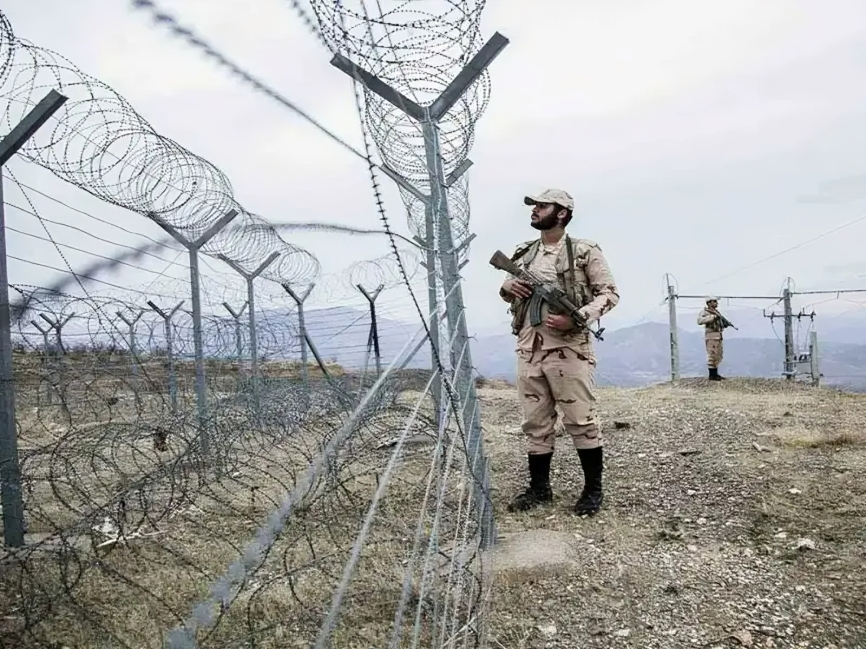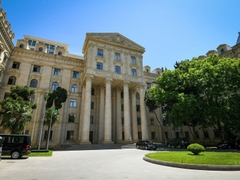Iran is moving to fortify its eastern border with Afghanistan in a bid to fight illegal migration and drug trafficking, along with enhancing security.
“Four army border engineering groups have entered Iran's northeastern region to implement the project of sealing the country's eastern borders,” Brig Gen Hassan Mokfi, Commander of Ground Forces in Iranian Army, said on April 29, according to IRNA.
The Iranian Interior Ministry allocated $3 billion for the project, which involves the construction of four-meter-high concrete walls, installation of barbed wire and fences, and, the construction of a road within three years, Mokfi said.
The project will be implemented in the northeastern region, including the provinces of Mazandaran, Golestan, Razavi Khorasan, North Khorasan, South Khorasan, and Semnan.
Since the Taliban took over power in Afghanistan in August 2021, there have been multiple clashes between the group's forces and Iranian border guards. Over the past three years, these confrontations have claimed the lives of military personnel and civilians on both sides, while each country accuses the other for initiating gunfire.
On April 25, six Iranian border guards who had been detained by the Taliban forces in the southeastern border areas of Iran and Afghanistan for "illegally entering the Afghan soil", were freed after "necessary measures were taken”.
Addressing the Shanghai Cooperation Organisation’s (SCO) defense ministers meeting in Kazakhstan on April 26, Iran's Defence Minister Mohammad Reza Ashtiani said that "Iran views the new and continuous attempt by defeated powers in Afghanistan to recover and revive terrorist groups such as Daesh [Islamic State group] as a major threat to the security geography of SCO".
Meanwhile, an Afghan international relations expert, Aziz Maarej said: “The blocking of the border between Afghanistan and Iran by Iranian authorities after the Kerman explosion is an indirect accusation that terrorists are coming from Afghanistan and ruining Iran's security”.
Afghanistan has nearly 200 border signs and symbols on its 921-km border with Iran, and work is underway to reconstruct these signs. According to the Spokesman of Afghanistan’s Ministry of Borders and Tribal Affairs, so far, the process of renewing border signs is 15% complete.
Iran, meanwhile, has frequently sought a border fence to control the influx of illegal migrants and drug trafficking.
The Iranian authorities announced plans to deport millions of Afghan refugees, labeled as “illegal” migrants. Iran claims to host approximately 5 million Afghan migrants, although some Iranian media sources estimate the number to be as high as 8 million.
Iran’s eastern and southeastern regions serve as a significant transit route for drugs originating in Afghanistan, destined for Europe. However, the Taliban administration denies reports of increased poppy cultivation in Afghanistan, urging the international community to support Afghanistan in eradicating drugs.
Tensions between Iran and Afghanistan have also simmered over water sharing for over a decade, escalating after the Taliban returned to power. Tehran has repeatedly urged the Taliban government to release the water of the Helmand River into Iran as per the 1973 Helmand River Water Treaty.
Iranian authorities have claimed for the past two years that the Taliban have agreed to allot 820 million cubic meters of Iran's water share from Helmand every year. However, the Taliban has not confirmed this agreement, nor any water released to Iran. Clashes at the border over water rights in May 2023 claimed the lives of at least two Iranians and one Taliban soldier.







 The Foreign Ministry of Azerbaijan has rejected a claim by French Interior Minister Gérard Darmanin on Baku’s alleged meddling in New Caledonia’s p...
The Foreign Ministry of Azerbaijan has rejected a claim by French Interior Minister Gérard Darmanin on Baku’s alleged meddling in New Caledonia’s p...
 Azerbaijan Railways (ADY) has successfully completed the reconstruction of the cargo yard located in the Astara region of Azerbaijan to ensure the ...
Azerbaijan Railways (ADY) has successfully completed the reconstruction of the cargo yard located in the Astara region of Azerbaijan to ensure the ...
 Turkmenistan's Foreign Minister Rashit Meredow and EU's Special Representative for Central Asia Terhi Hakala have discussed prospects for cooperati...
Turkmenistan's Foreign Minister Rashit Meredow and EU's Special Representative for Central Asia Terhi Hakala have discussed prospects for cooperati...
 In a high-profile trial that has gripped the nation, Kuandyk Bishimbayev, Kazakhstan’s former economy minister, has been sentenced to 24 years in p...
In a high-profile trial that has gripped the nation, Kuandyk Bishimbayev, Kazakhstan’s former economy minister, has been sentenced to 24 years in p...
 Foreign Minister of Azerbaijan Jeyhun Bayramov met with his Armenian counterpart Ararat Mirzoyan in Almaty, Kazakhstan, to negotiate the peace agenda.
Foreign Minister of Azerbaijan Jeyhun Bayramov met with his Armenian counterpart Ararat Mirzoyan in Almaty, Kazakhstan, to negotiate the peace agenda.



